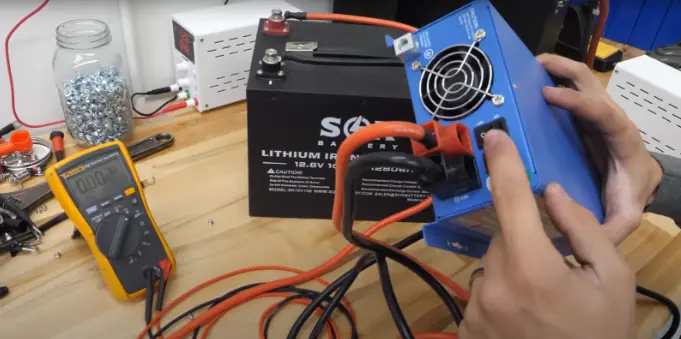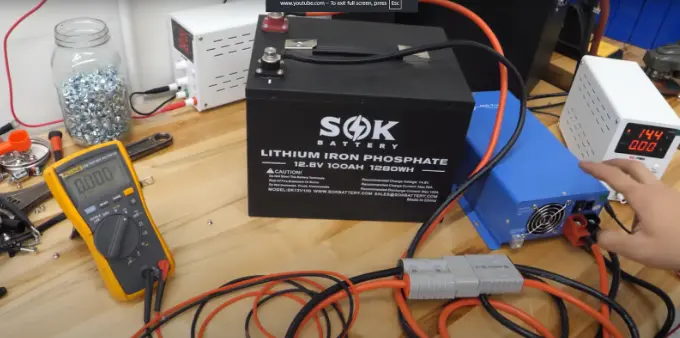It’s easier to kill your battery than you might think. Especially a lithium battery. Even small drains on the battery can deplete it to the point where the BMS (Battery Management System) cuts off all discharging, and the terminals have no voltage. Once here, the battery does not accept a charge, and it may seem bricked.
When you buy a LiFePO4 (lithium iron phosphate) battery, unlike a lead-acid battery, it doesn’t arrive 100% full. This is because full batteries can be dangerous to transport.
If you hook it up to a working system and start using the battery straight out of the box, you may be surprised when the battery dies after only a few hours. It no longer functions and will not take a charge. A multimeter shows only a fraction of a volt, which is effectively nothing.
Sometimes when this happens, you try to use a charger like the AIMS-75 Amp charger/converter, and none of the activity lights kick on. Nothing is happening and the charger isn’t activating. You might think that the battery is totally dead, and that would be really frustrating after buying a BRAND NEW battery. However, the battery is not actually dead.
These chargers detect a battery by measuring at least some voltage on their terminals. They can then kick on and run their charger function. This example charger, like other inverter chargers, requires voltage on its input because it auto-selects between 12 and 24 volts, and it doesn’t know what to do when it sees effectively zero volts.
There are multiple fixes to this situation.
With the inverter charger attached to the battery, set an adjustable power supply to 14V and 10A (28V for a 24V battery or 56V for a 48V battery). Connect the power supply to the battery terminals where the inverter charger is also connected. The power supply provides the voltage to activate the charger. Once the inverter charger activates, you can disconnect the adjustable power supply from the battery terminals.
If you have an inverter-charger but not an adjustable power supply, you can use a set of jumper cables and another battery. It’s best to use a battery between 11V and 14.6V (22-29.2V for a 24V battery or 44-58.4V for a 48V battery).
Connect the two batteries with the jumper cables, just like you were jump-starting a car battery. Remember that positive connects to positive and negative connects to negative.
Any method like this, where power is transferred from one source to another, will work. The important thing is to provide the charger terminals with voltage, so it can turn on and start charging. As soon as the battery detects current flowing into it, it will wake back up and accept a charge like normal.
This is a relatively simple fix, and it’s highly overlooked. However, sometimes you try all this, and the battery still will not accept a charge. This can happen if the battery was damaged in shipping or has pinched wires.
For user serviceable batteries (batteries that can be disassembled without voiding the warranty), you can open it up to see if there is any damage. Specifically check for pinched wires or signs of damage during shipping. If so, contact your distributor or vendor.
The IP67 and IP22 Blue Smart Chargers by Victron are an all-in-one solution, acting as both the charger and the adjustable power supply. Simply connect the Blue Smart Charger to your dead battery to bring it back to life.
Thank you for reading! We love answering any questions about DIY electrical systems, and we’re grateful to be a part of your community. We even have a YouTube channel dedicated to this! Check it out for more tips and information.


